The Hoysala Temples at Belur, Halebidu and Jain Shrine at Shravanabelagola
The Amazing temples of Belur, Halebidu and the largest monolithic statue in the world at Shravanabelagola
I have been to Belur, Halebidu and Shravanabelagola a few times, of course not as often as Hampi though! The finely sculpted temples of Belur and Halebidu are very popular amongst tourists. Likewise is the monolithic statue of Bahubali in Shravanabelagola.
Both Belur and Halebidu were once the capitals of the Hoysala dynasty. The Hoysala dynasty ruled most parts of Karnataka from the 10th – 14th centuries. Malik Kafur the commander of the Deccan Sultanate ruler Alauddin Khilji plundered both Belur and Halebidu in the 14th century. The Hoysala dynasty came to an end after King Ballala II was killed in war fighting the army of Malik Kafur. This region of Belur and Halebidu was then taken over by the Vijayanagara empire.
Being 16 kms apart from each other, Belur and Halebidu are known for the following temples:
- Chennakeshava temple
- Hoysaleswara and Shantaleswara temples
- Kedareswara temple
- Jain Basadi
Chennakeshava temple, Belur
The Hoysala King Vishnuvardhana built the Chennakeshava temple in 1117 AD. This temple took a whopping 103 years to build. This temple marks the victory of the Hoysalas over the mighty Cholas.
Going by the temple name, Chenna means ‘Handsome’ and Keshava means ‘Lord Vishnu’. The temple name thus means ‘Handsome Lord Vishnu’.
Chloritic Schist (soap stone) was used for building the Belur and Halebidu temples. This temple is famous for the exquisite carvings and sculptures. The entrance to the temple sports a golden yellow gopuram. A gopuram is a pyramid like structure in Hindu temples. This gopuram was built by the Wodeyars later on.
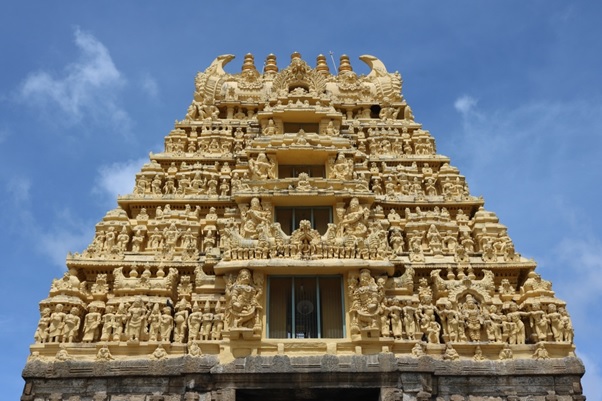
Deepa stambha and Garuda stambha:
On entering the temple, a Deepa stambha and Garuda stambha are seen on the right. The height of the Deepa stambha is 35m high. The Deepa sthamba has a small opening at the bottom. This opening therefore allows the wind that blows by to pass through!
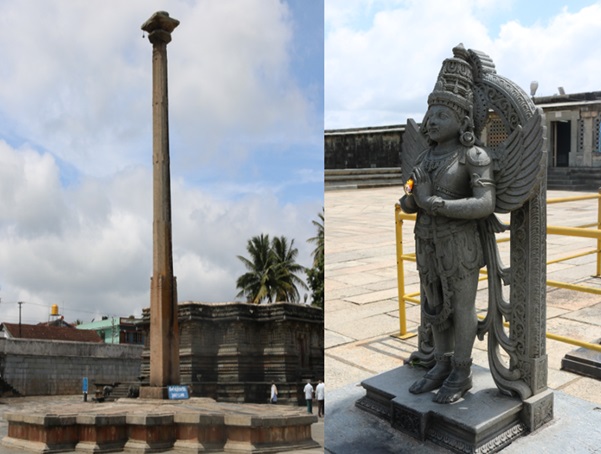
Miniature shrines and Hoysala:
On either side of the entrance to the main shrine are miniature shrines. Behind each miniature shrine is a Hoysala statue. The Hoysala statue symbolize the Hoysala dynasty. Going by the name (Hoysala), Hoy means ‘Strike’ and ‘Sala’ is one who killed the lion in one blow. Sala was the first ruler of the Hoysala dynasty.
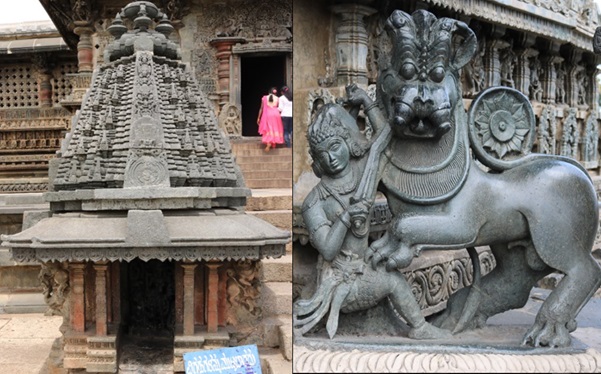
Garuda (vehicle of Lord Vishnu)
There is an impressive carving of Garuda prostrating atop before entering the main shrine. The intricate carvings in addition to the Garuda is a sight to behold.

Pillars and Sculptures in the main shrine:
Lathe like pillars with amazing carvings welcome one in the main shrine. As a matter of fact, their smooth finish and shine are a treat to the eye. All in all there are 48 pillars in this temple.

The main shrine has many carvings depicting mythological tales such as below.
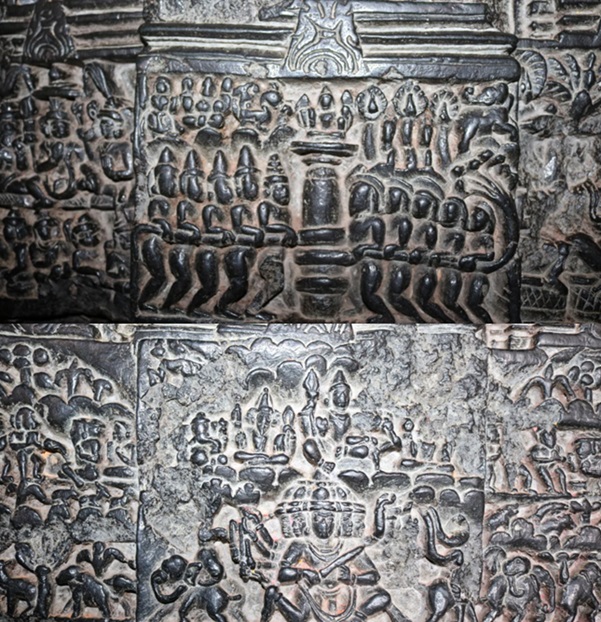
The above scenes will bring back memories from the mythological tales or television serials!
- The churning of the ocean by the Gods and Demons (shown on the top)
- The demon king Ravana lifting Mount Kailash (shown beneath it)
Baaravahakas and Makara:
Baaravahakas:
There is a ‘baaravahaka’ on the top of each pillar. Going by the name, ‘baara’ means heavy and ‘vahaka’ means carrier. The baaravahakas appear to be holding the weight of the upper part of the temple.
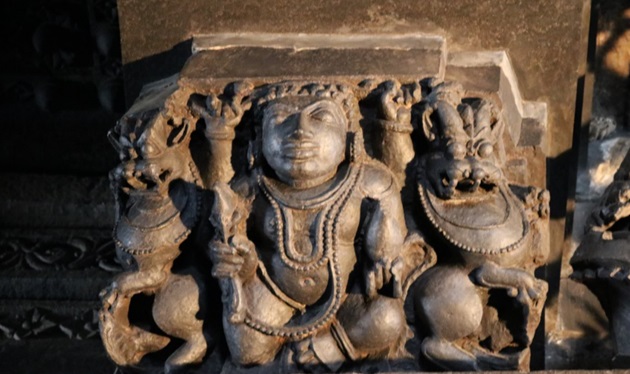
Chennakeshava, Lakshmi and Makara:
Sculpture of Lord Vishnu, Goddess Lakshmi and Makara are seen at the entrance of the main deity. Makara is seen on either side of Vishnu and Lakshmi. The imaginary animal Makara is a combination of 7 animals. One will especially find it across all Hoysala temples.
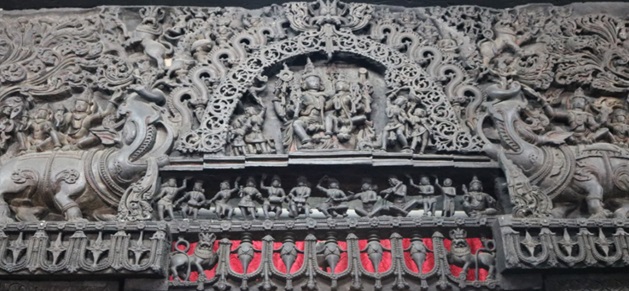
Friezes of the temple:
The Chennakeshava temple is built in a star shape form over. There are 7 layers of friezes on the exterior walls of the temple. The friezes are of elephants, lions, horses, decorative flowers or swans, daily life and mythological stories. On the whole the frieze of elephants are 650 in number.
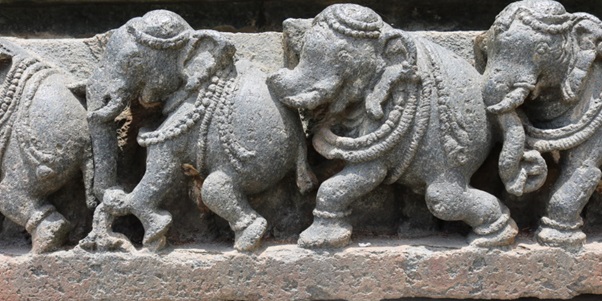
Madanikas (Damsels):
King Vishnuvardhana’s wife Queen Shanthaladevi danced in this temple. As a matter of fact, she is the source of inspiration behind the sculptures of ‘Madanikas’ in the temple. There are 42 of them across the temple in different poses. The precision and facial expression of the Madanikas will leave one awestruck.
Some of the popular poses of the Madanikas are:
- Darpana Sundari, the Madanika is seeing her image in the mirror
- Madanika talking to the parrot
- Monkey molesting Madanika

Sculpture of Gods and Goddess:
The exterior of the temple has many depictions of the Hindu Gods and Goddesses in various forms.
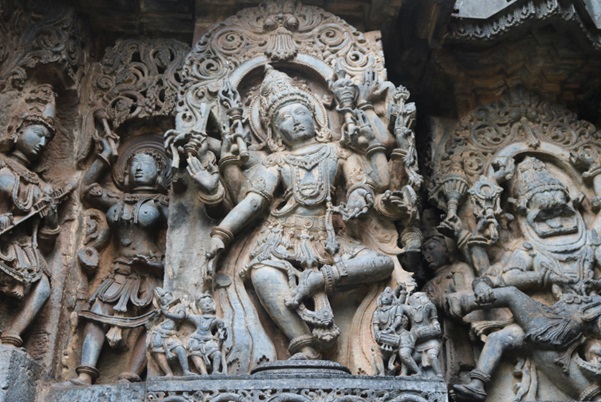
Hoysaleswara and Shantaleswara temples, Halebidu
After Belur, Halebidu was the capital of the Hoysala dynasty. The Hoysaleshwara and Shantaleswara temples on the star pedestal are in ruins here. Lord Shiva is the main deity of these temples.
It took an astounding 190 years to build these temples. Built in 1120 AD, these temples were ransacked twice by the Deccan Sultanate. The Nandi faces the deities of both temples. The monolithic Nandi are 6th & 7th largest in India.
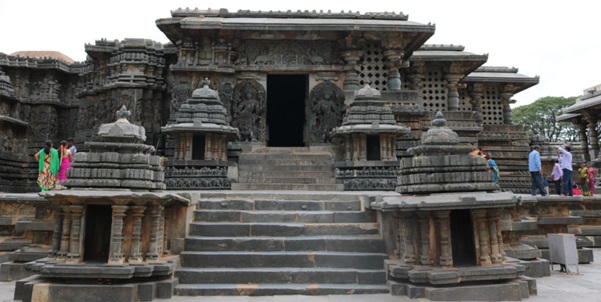
The Hoysaleswara temple has a similar entrance like the Chennakeshava temple in Belur. It is however much larger in size and height. The Hoysaleswara and Shantaleswara temples have 11 layers of friezes whereas Chennakeshava temple has seven.
There are many interesting sculptures on the exterior walls from the epics. My favorite particularly is Karna fighting Arjuna from the Mahabharata epic.
How does one identify who is Arjuna and Karna from the below?
It took me a while to figure it out. It can be deciphered if one looks carefully.
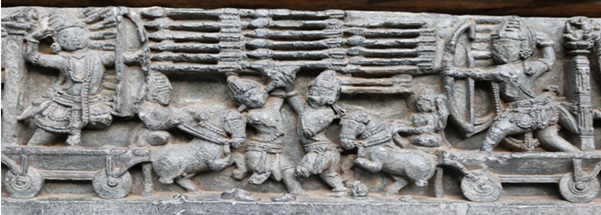
The above scene should take you back to the epic Mahabharata!
- The warrior on the right is Arjuna. This is because of the symbol of Hanuman on the chariot.
- The warrior on the left is Karna. This is because of the symbol of a crow on the chariot.
Sculptures across the temple:
Intricate carvings and sculptures run across this temple. This notably includes mythological stories from the epics.
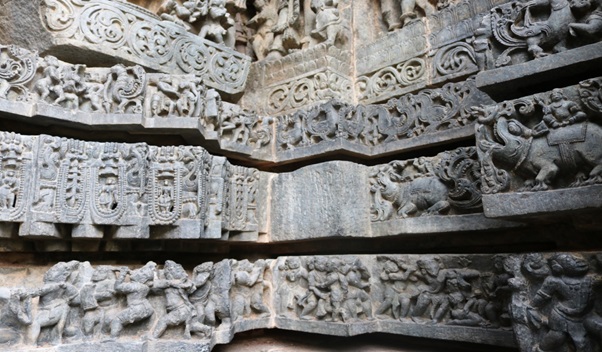
Carved on the walls of the temple are beautiful sculptures of Hindu Gods – Brahma, Vishnu and Shiva.
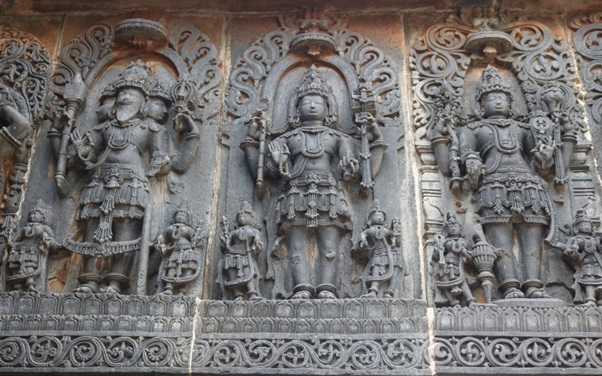
Large Nandi facing the temple:
Monolithic Nandi’s face the main deity Shiva at both Hoysaleswara and Shantaleswara temples.
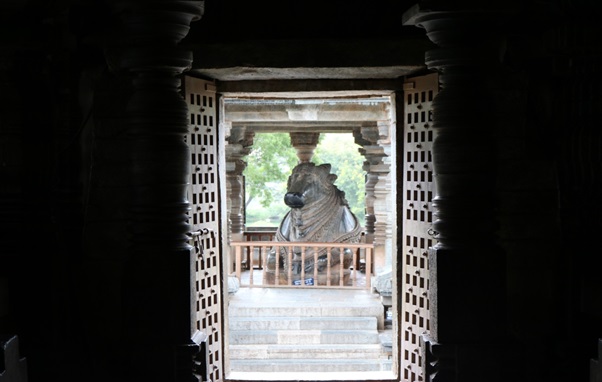
The imaginary animal – Makara:
Makara the imaginary animal by and large is a combination of 7 animals with the:
- Body that of a boar
- Limbs that of a lion
- Mouth that of a crocodile
- Trunk that of an elephant
- Eyes that of a monkey
- Ears that of a cow and
- Feathers that of a peacock
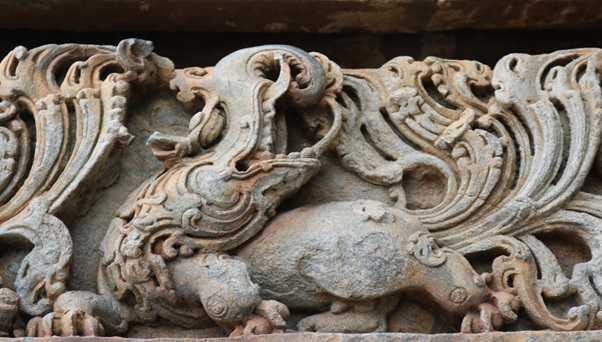
Kedareswara temple, Halebidu
Built in 1200 AD, the Kedareswara temple is hardly a km away from the Hoysaleswara temple. Raised on a star shaped pedestal the temple has beautiful carvings. Lord Shiva is the main deity of this temple.
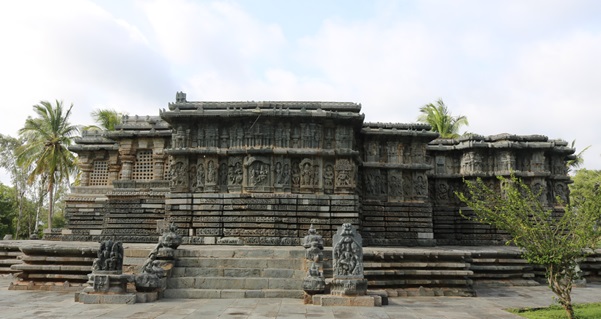
Carvings on the exterior:
The temple has carvings of the Hindu gods and goddesses on the walls. This temple has undergone some form of restoration over time. This temple is otherwise neatly maintained.
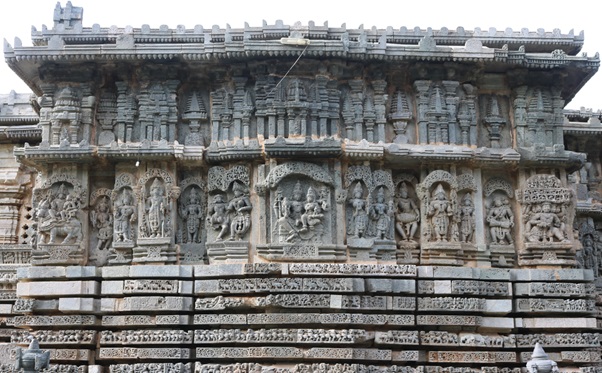
Sculptures on Ceilings:
The ceilings of the temple have great sculptures. Likewise this applies to all Hoysala temples.
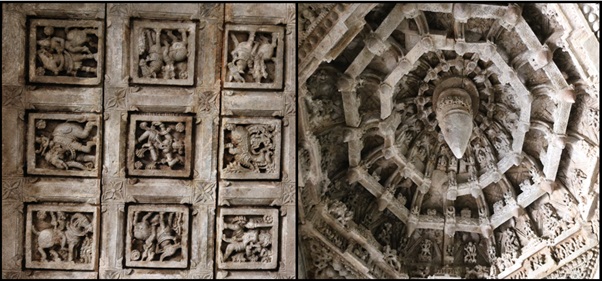
Friezes on the exterior:
Like the other temples, there is a frieze of elephants at the bottom. However none of them are similar!
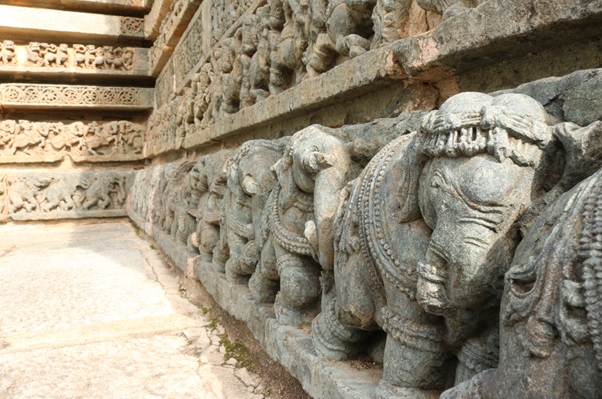
Jain Basadi, Halebidu
The temples in Jain Basadi were built during 1133 AD and 1192 AD. As a matter of fact, King Vishnuvardhana was a Jain by religion. He then converted to Vaishnavism under the influence of Ramanujacharya. Vishnuvardhana was tolerant against all religions. Hence he built temples of Shiva, Vishnu and Jains over the years.
The temples have an 18 feet statue each of Parshavanatha and Shantinantha. Parshavanatha was the 16th tirthankara and Shantinantha the 23rd tirthankara. A tirthankara is a Guru who preaches the righteous path. There are 24 tirthankaras in Jainism. The 24th being Mahavira whose monolithic statue resides in Shravanabelagola.
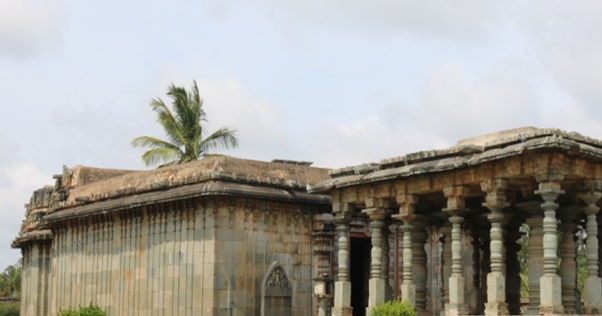
In conclusion, a visit to Belur and Halebidu is certainly a recommend. Additionally one can cover Shravanabelagola as a part of this trip. On the way to Hassan, one can visit Gorur and also briefly stop by the Shettihalli Rosary Church.
Shravanabelagola:
Shravanabelagola is famous for the world’s largest (58 feet) monolithic statue of Bahubali. Bahubali is the 24th and last tirthankara. Hence it is one of the most important pilgrimage destinations for Jains. The nude statue of Bahubali dating back to 981 AD is carved carefully with much perfection.
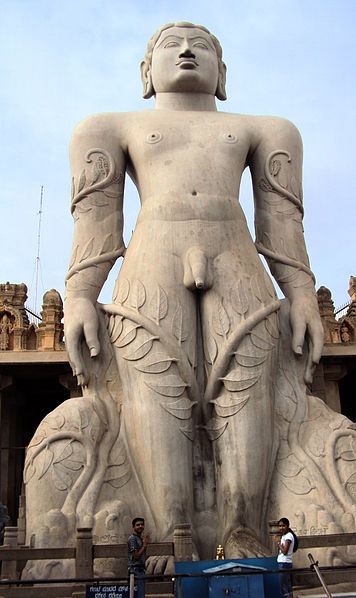
Ascetic White Pond (Shravanabelagola):
Shravana in the name Shravanabelagola means ‘ascetic’ in Sanskrit. And Bela-gola means ‘white pond’ in Kannada. There is a large tank which is visible from the top. Perhaps due to which the city gets its name.
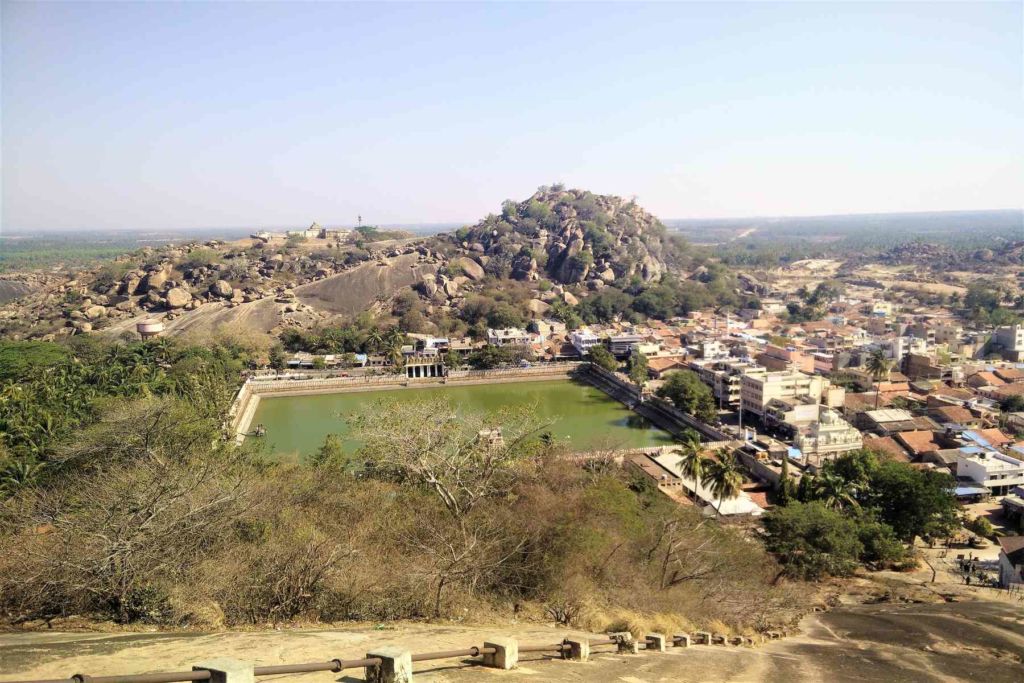
Ascend up the Vindhyagiri Hill:
The Gomateswara temple is built on top of Vindhyagiri hill. It is located at an altitude of 3347 feet. Altogether there are 620 steps from the bottom to reach the temple. The steps get quite steep when you get closer to the top. Hence one can take a break to catch some breath before continuing further.
I would recommend to start the ascend early in the morning. Thus returning before the sun comes beating down. In the event that one is not able to climb up, dolis are available. The dolis in other words are vehicles which are human powered for transport.
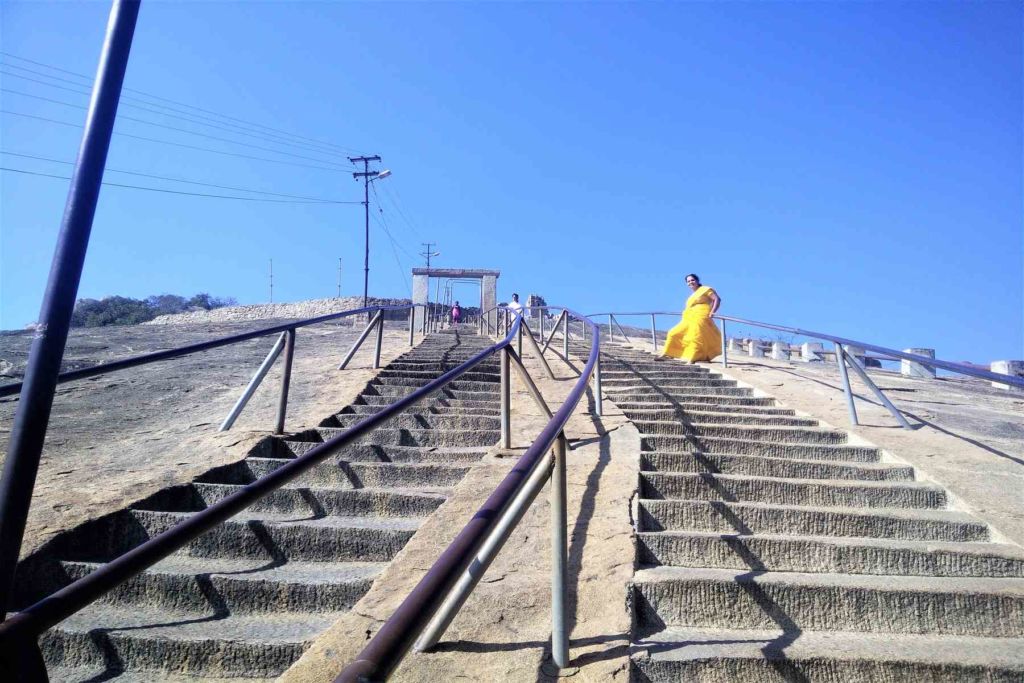
Mahamastakabhisheka and Inscriptions:
Shravanabelagola celebrates the ‘Mahamastakabhisheka’ festival every 12 years. This festival henceforth attracts thousands of devotees and tourists from all over India. Inscriptions close to the feet of Bahubali date back to 981 AD.
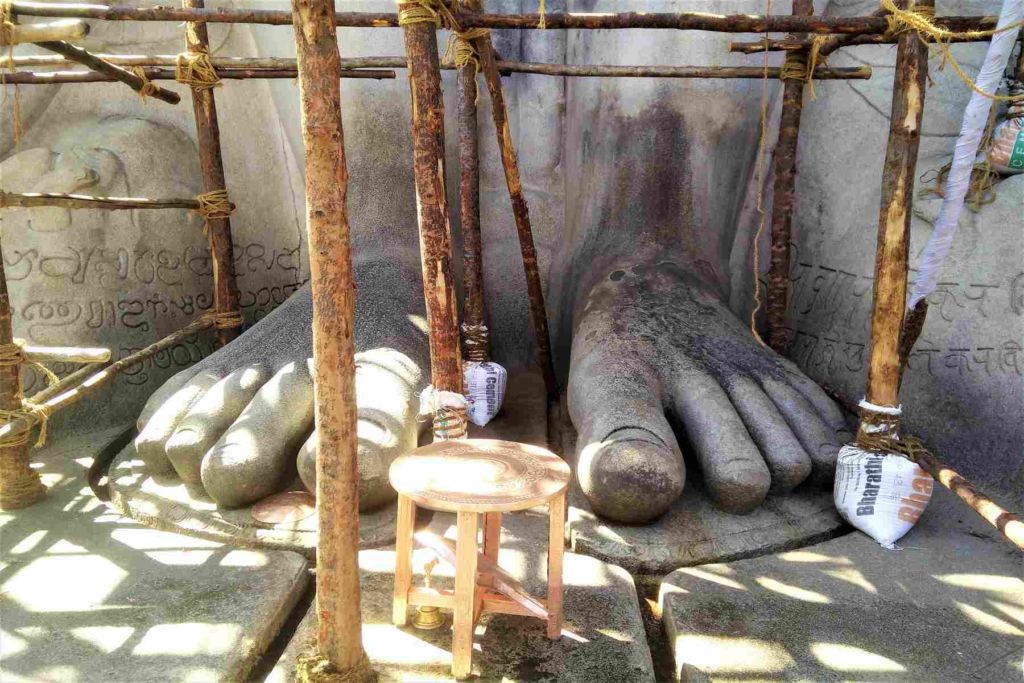
It is believed that the great King Chandragupta Maurya meditated in Shravanabelagola. The Chandragupta Basadi is dedicated to Chandragupta Maurya. There are several inscriptions as one ascends the Vindhyagiri hill. All in all there are over 800 inscriptions in the Chandragiri and Vindhyagiri hills.
The inscriptions date back to the period from 600 AD to 1830 AD. Some of the inscriptions mention the rise and growth of the dynasties that ruled over the period of time. The dynasties being Ganga, Rashtrakutas, Hoysalas, Vijayanagara and Wodeyars.
In conclusion, a visit to Shravanabelagola is certainly a recommend. Moreover Belur and Halebidu are not far away and can be combined as a part of the trip.
Best time to visit Belur, Halebidu and Shravanabelagola
The winter months from October to March are the best times to visit Belur, Halebidu and Shravanabelagola.
How to reach Belur, Halebidu & Shravanabelagola ?
Belur, Halebidu and Shravanabelagola are best accessible from Bengaluru.
By Rail:
Hassan is the nearest railway station to Belur and Halebidu. Likewise Pandavapura is the nearest railway station to Shravanabelagola. One can hire a private taxi from the railway station to cover the respective city.
By Bus:
There are number of buses which ply to Belur, Halebidu and Shravanabelagola from Bengaluru.
By Car:
Both Belur and Halebidu are approx 220 kms from Bengaluru. The driving time to both the cities is about 4 hours. Shravanabelagola is approx 145 kms from Bengaluru. The driving time is about 2 hours and 45 minutes.
For more such cultural experiences in India, check out the Indian heritage and culture and its many facets. If history is your interest, check out some of the historical places to visit in India. And if spiritual is your interest, check out the places to visit for retirees and otherwise.
In case you are keen on traveling to southern India, you could take a look at the itinerary of Karnataka and cover Belur, Halebidu and Shravanabelagola as a part of this itinerary.
India is not just about culture. In fact, there are many more facets to this ancient land – wildlife, spirituality, mystery, nature, history and so on. Read more about the travel packages which explore the different facets of incredible India.
In case you are keen on experiential travel and wish to explore India, visit Beyonder Travel

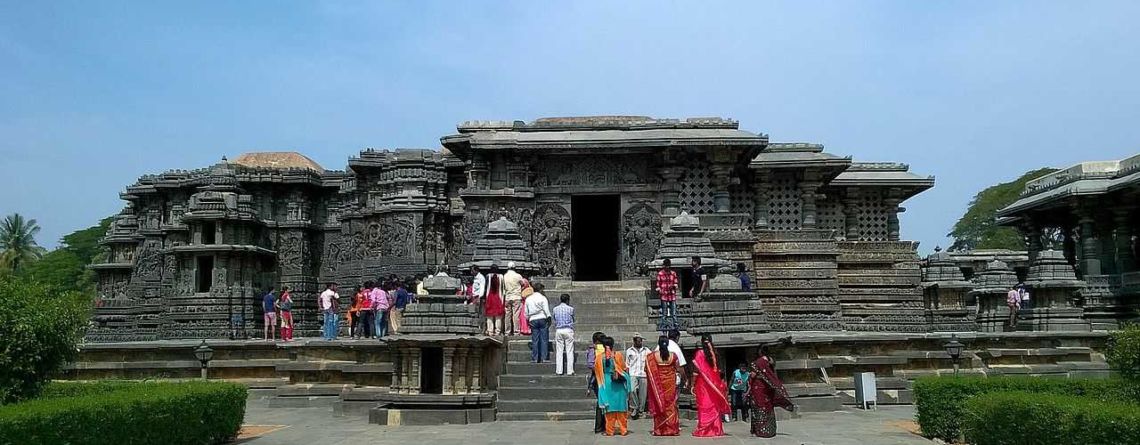

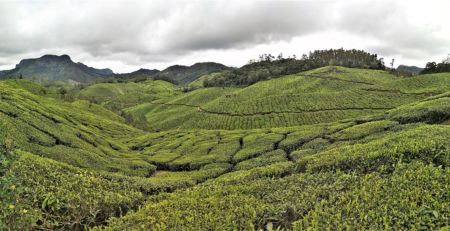
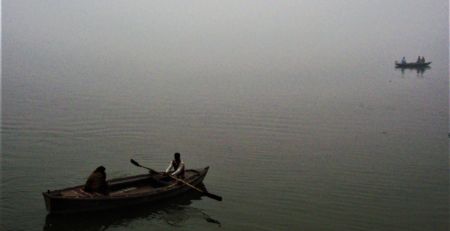
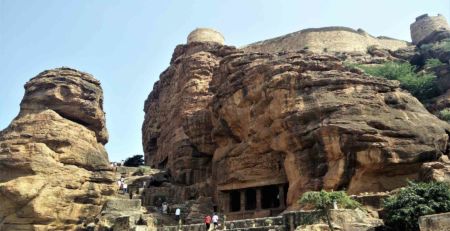
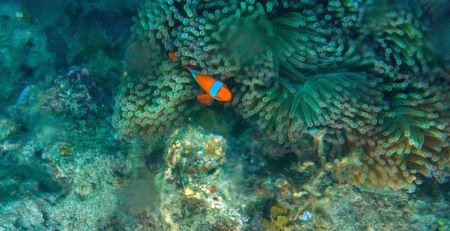
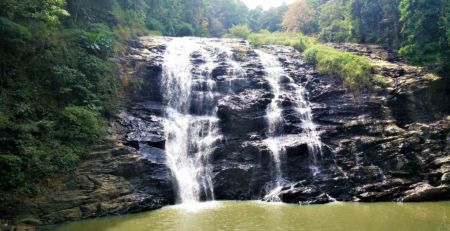
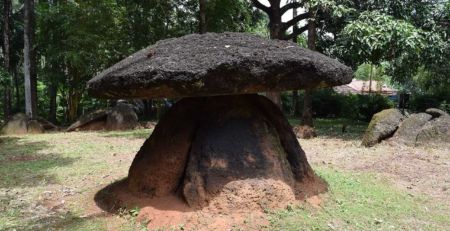
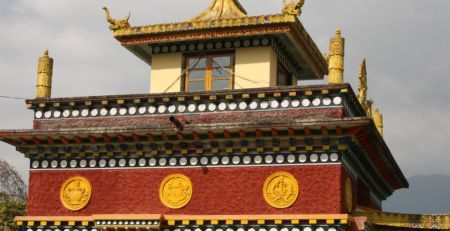
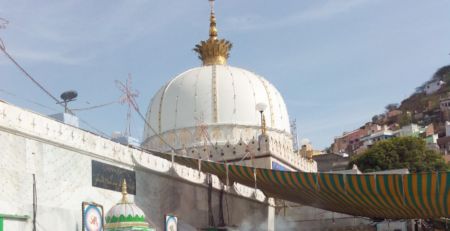
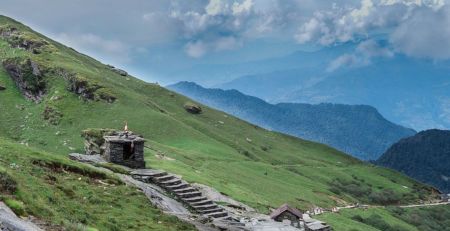
Comment (1)
Bahubali was son of tirthankar bhagwan Rushabnath..
Bhagwan Mahaveer is the 24th or the last tirthankar of this era.